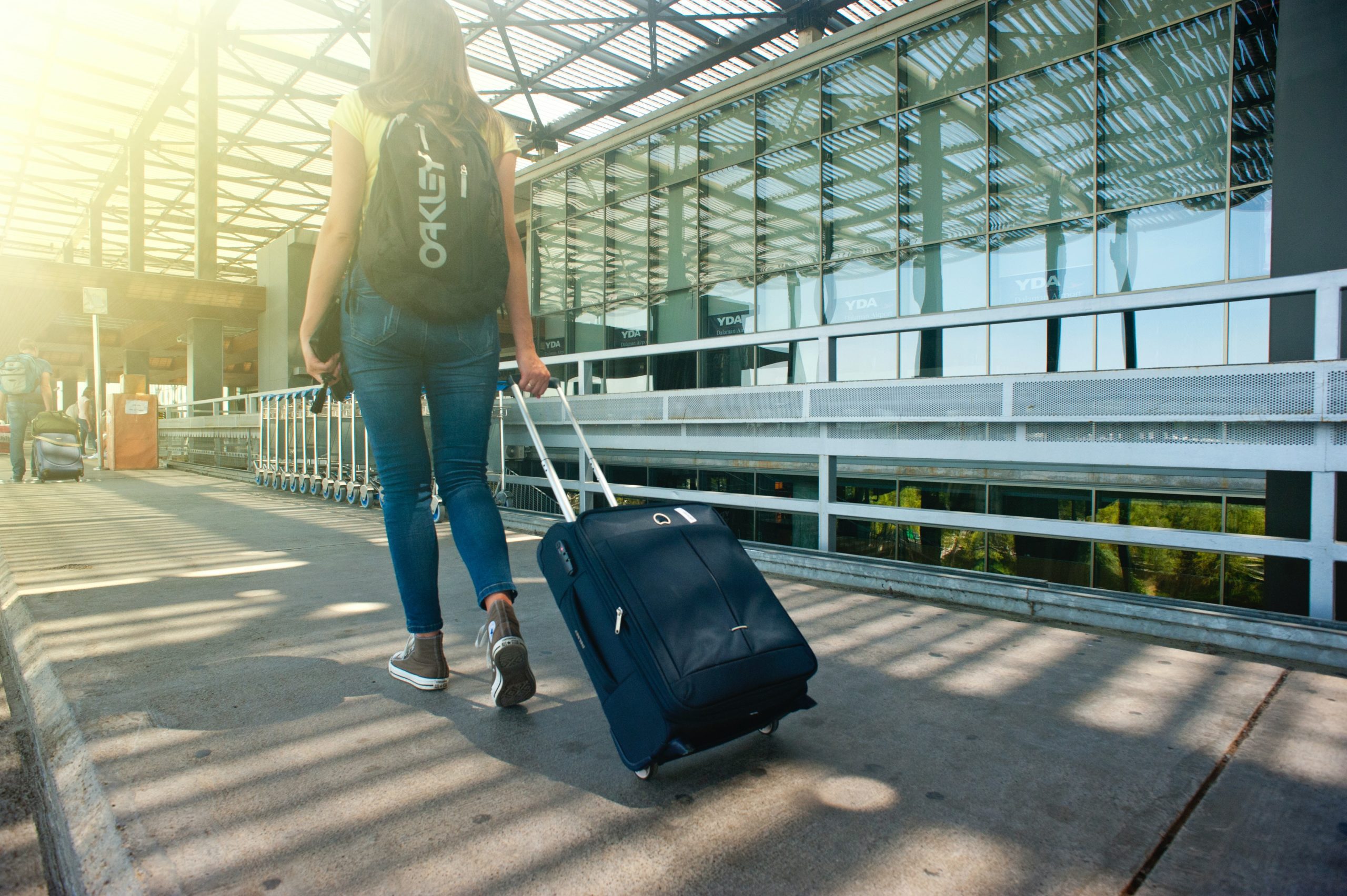Table of Contents
Updated on October 16, 2022
In 2016, 81.6 million people took flights with Canadian airlines, while over 2.6 million people per day flew with American ones in 2018. A 2014 survey conducted by Trip Advisor found that 79% of its 2,600 participants were “traveling in winter for leisure.” Between holidays and escaping the cold, airports are popular places during this season.
Sanitizing on an Airplane
Travelers are usually concerned with packing everything they will need for their trips, getting through the long security lines, and trying not to catch any sicknesses from the plane. However, they may forget that germs in the airport matter too.


Recirculated cabin air being full of germs is mostly a myth. According to the International Air Transport Association, only half of the air is recirculated and the other half is pumped in fresh. Additionally, the recirculated air passes through a HEPA filter that removes 99.9995% of the microorganisms floating in it. Picking up an illness from the airplane is still very possible, especially if a nearby passenger is ill and coughing or sneezing, but the air alone is likely not going to be the culprit. Approximately 20% of people will experience respiratory infections within a week after air travel. Along with sharing space on the plane, customers share several different surfaces and objects in the airport that could be contributing to this. These include:
- Handrails
- Elevator buttons
- Door handles
- Arm rests
- Security bins
- Boarding pass machines
- Phone-charging stations
- Food court counters and utensil stations
- Washroom stall locks
- Water fountains
Broadly speaking, germs can live on hard surfaces that are dry for several hours and on ones that are wet for a few days. As hands pick up 30-50% of the microorganisms on objects and surfaces they touch, airports should provide Purell hand sanitizer dispensers throughout walkways, at gates, near food establishments, and by security lines. This will help to ensure that everyone stays healthy. Making these dispensers available in other areas of the airport gives individuals the chance to quickly clean their hands before eating, touching their faces, or tending to a family member.
Sanitizing at the Airport


Airport Washroom Hygiene
Washrooms are the more obvious place for picking up bacteria. Keeping these facilities clean despite the high amount of traffic, rolling luggage, and rushing in and out can be a challenge, but touch-free amenities can make a great difference. Automatic soap dispensers, faucets, air hand dryers, and/or paper towel dispensers are the most hygienic options for high-traffic areas like these, as eliminating touch decreases cross-contamination. Because 80% of communicable diseases are spread by hand, eliminating touch is significant for the health of everyone.
Family Restroom Hygiene in Airports


Providing family amenities also promotes hygiene in the washrooms. Approximately 30% of adults travel with children in the United States. Changing tables in both men/s and women’s washrooms means parents will have a safe, clean place to change their children’s diapers and prevents them from having to do this elsewhere, especially in a more commonly used area. Diaper-changing tables are also easy to wipe down before and after use with a sanitizing wipe to ensure the surface is clean. Offering a diaper disposal unit next in the changing area further isolates this waste, prevents odor, and cross-contamination. Plus, families will appreciate the accommodations.
As airports see thousands of people every day, hygiene needs to be a priority for everyone. With the right products and regular maintenance, this can be done simply and effectively.
Citron Hygiene specialize in innovative commercial hygiene products and services. Contact us today to discuss your airport hygiene needs.
Related posts:
- Hygiene Tips For Your Transportation Business
- Hygiene Tips for Your Business: Photography Studios
- Hygiene & Cleanliness In A Supermarket – Tips, Good Practices
- Car Dealership Hygiene & Sanitation Tips – GUIDE [2024]
- Hygiene Tips for Your Business: Children’s Play Centers
- Hygiene Tips for Your Business: Entertainment
- Hygiene Tips for Your Business: Restaurants
- Hygiene Tips for Warehouse And Food Distribution Centers
